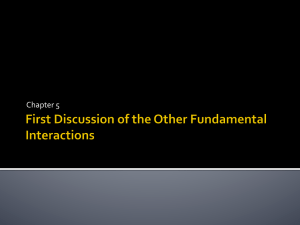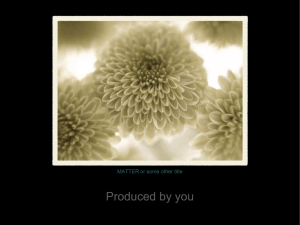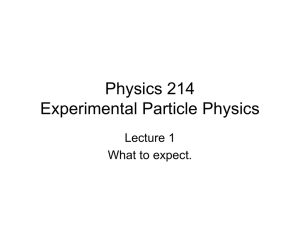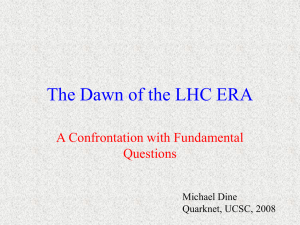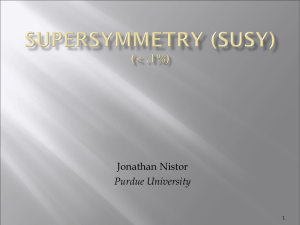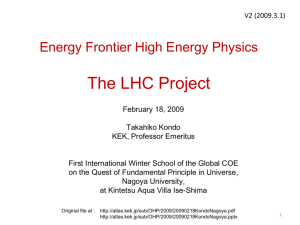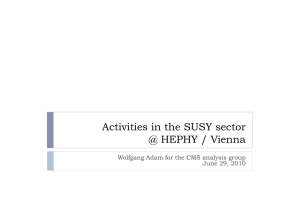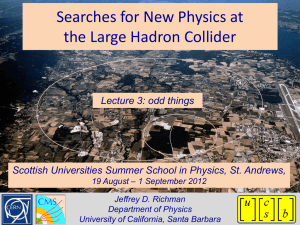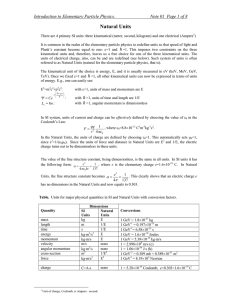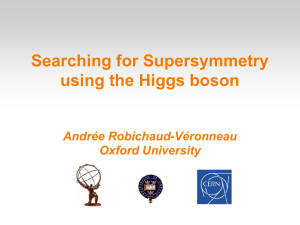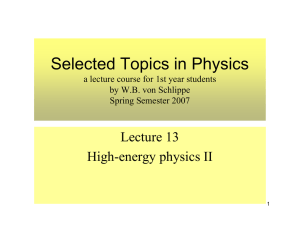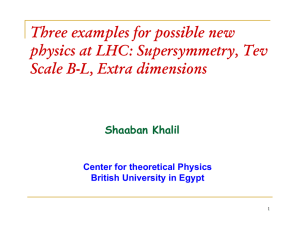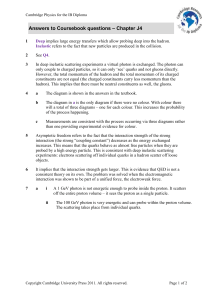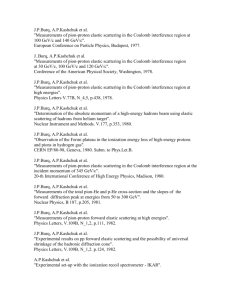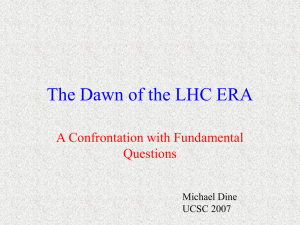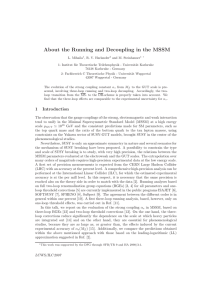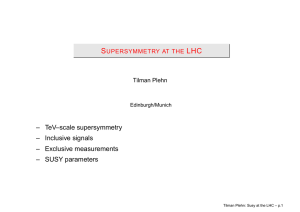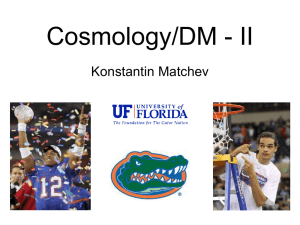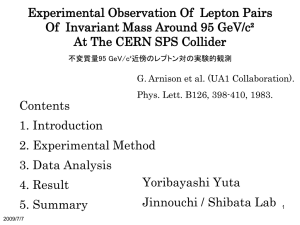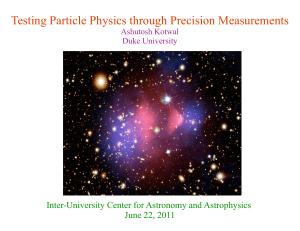Linville_Presentation
advertisement
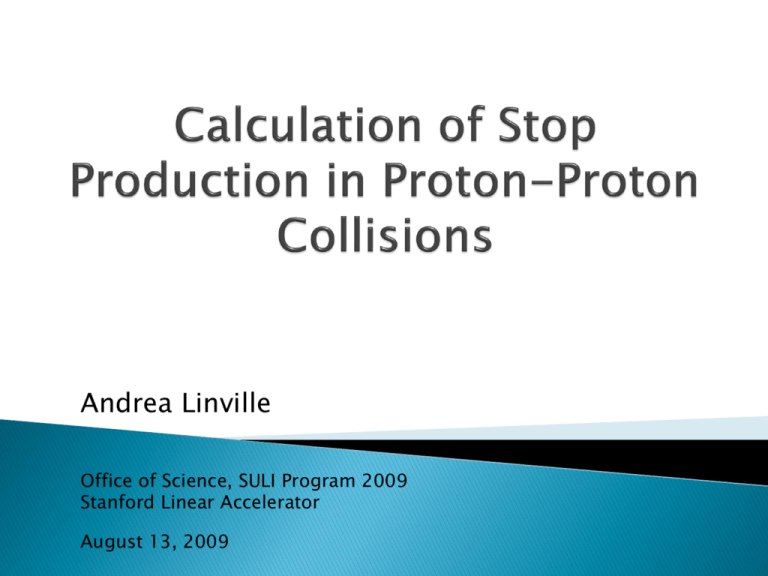
Andrea Linville Office of Science, SULI Program 2009 Stanford Linear Accelerator August 13, 2009 Objective Standard Model What is SUSY? What will we calculate? Results The Future Use parton-model methods to predict the stop squark production crosssection in proton-proton collisions at LHC energies. Fermions (spin ½) Bosons (integer spin) = force mediators Elusive Higgs boson ◦ Generates masses of leptons and W, Z SM is incomplete ◦ Dark matter? ◦ Hierarchy problem? ◦ Matter/antimatter imbalance? Each SM particle has a superpartner ◦ difference: ½ unit of spin SM fermions → SUSY bosons SM bosons → SUSY fermions SUSY is a broken symmetry Sparticle masses depend on SUSY breaking model (unknown) . . .Parton Distribution Functions (PDFs) . . Qμ = muon charge Qe = electron charge gL = xw – ½ g R = xw (xw = weak mixing angle) α = fine structure constant GF = Fermi coupling constant MZ = mass of Z boson ΓZ = decay width of Z boson Modifications made to equations: ◦ Replace electron charge with quark charge ◦ Separate components for: u, c, t quarks (+2/3 charge) d, s, b quarks (-1/3 charge) ◦ Sum over quark flavors Partons: quasi-free pointlike structures that make up hadrons PDFs describe the probability density for finding a parton with a given fraction of the total momentum Convenient definitions: ◦ = Q: scattering energy/invariant mass of the products ◦ : proton center-of-mass energy (“machine” energy) The equation we integrate: Monte Carlo integration algorithm 3 possible initial states: ◦. ◦. ◦. ◦ Each initial state needs a separate cross-section equation… but… where αs = strong coupling constant m1, m2 = masses of produced squarks s = scattering energy was calculated to be 61.6 fb Reminder: 1 barn = 10-24 cm2 Invariant dimuon mass: 500 GeV This is the order of magnitude expected. ∘ Greater contribution from sea quarks as scattering energy increases ∘ At low energies, the sea quarks are confined within hadrons ∘ The probability densities of b and t were exactly zero at these energies Resonance at 91 GeV ±0.5, ≈ MZ (91.2 GeV) Expected: 1fb at M =500 GeV Calculated: 0.96 fb Data taken every 1 GeV Machine energy: 14 TeV (LHC) Maximum crosssection: 0.27 nb More difficult to produce stops with increasing stop mass We examined only leading order (LO) Feynman diagrams can be used to establish a lower bound on stop mass, once we have an experimental bound on σ Similarly, if stops are observed, σ can determine stop particle masses Our results are useful for: ◦ Interpreting data ◦ Preparing new experimental searches for SUSY My mentor, JoAnne Hewett Tom Rizzo Michael Peskin Theory graduate students: John Conley, Randy Cotta, and Jamie Gainer S. Dawson, E. Eichten, and C. Quigg. “Search for supersymmetric particles in hadron-hadron collisions,” Physical Review D, vol. 31, no. 7, pp. 1581-1637, 1 April 1985. W. Beenakker, M. Krämer, T. Plehn, M. Spira, and P.M. Zerwas. “Stop Production at Hadron Colliders,” Nuclear Physics B, vol. 515, pp. 3-14, 1998. M. Schott. “Z Boson Production at LHC with First Data,” The 2007 Elsevier publishing, Physics Letters B, vol. 667, Issues 1-5, 18 September 2008. Europhysics Conference on High Energy Physics Journal of Physics, Conference Series 110, 2008.

